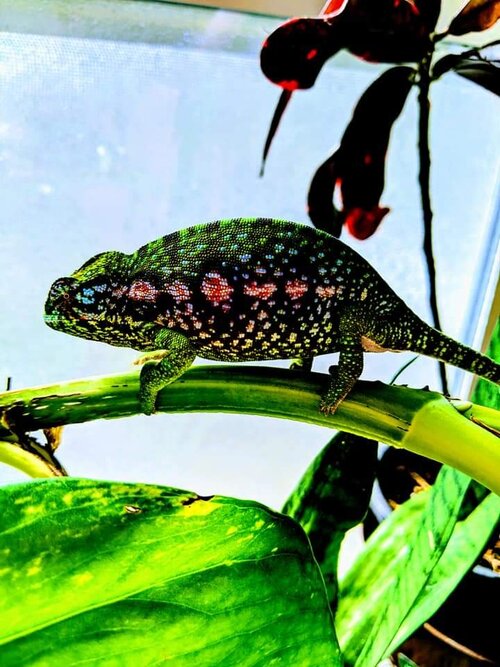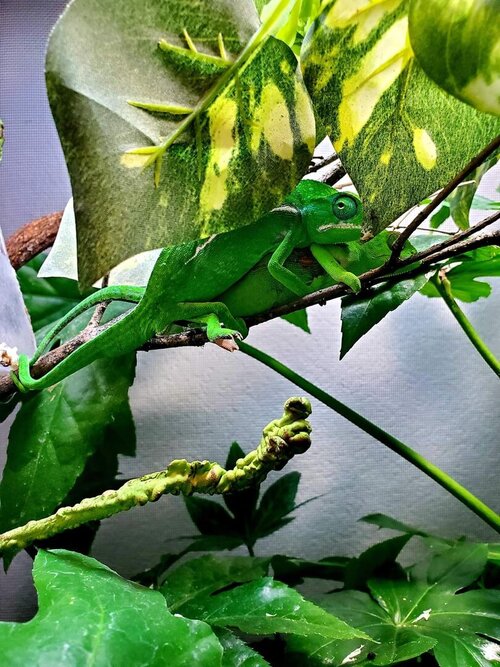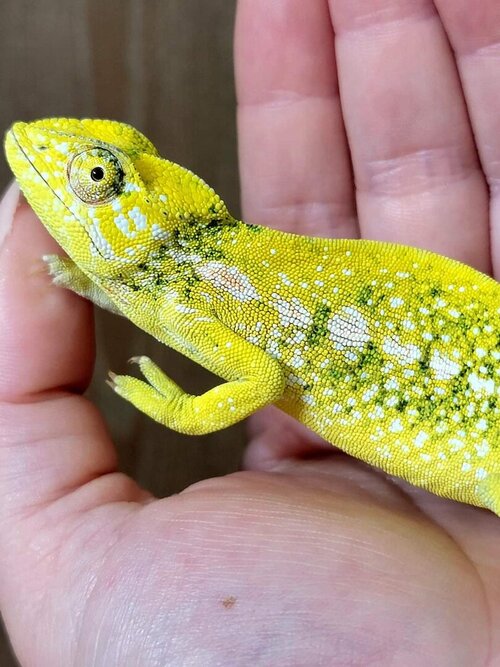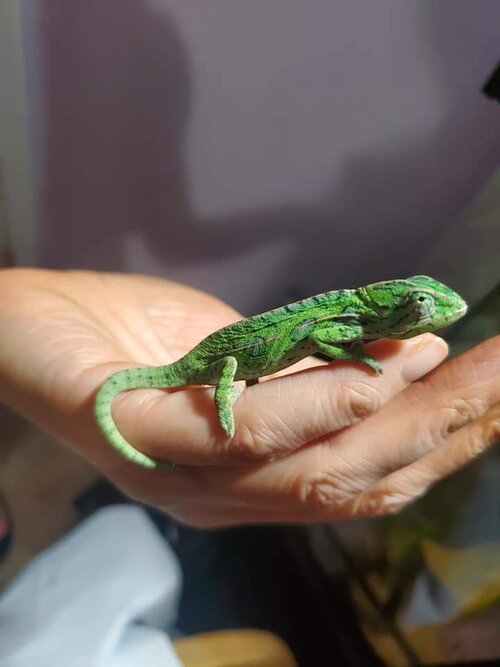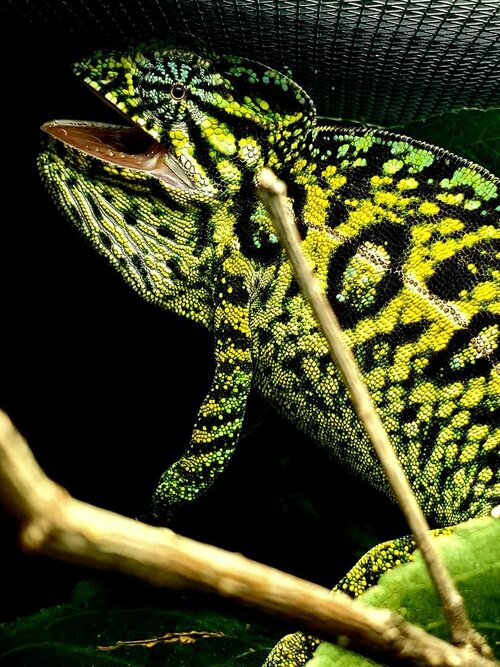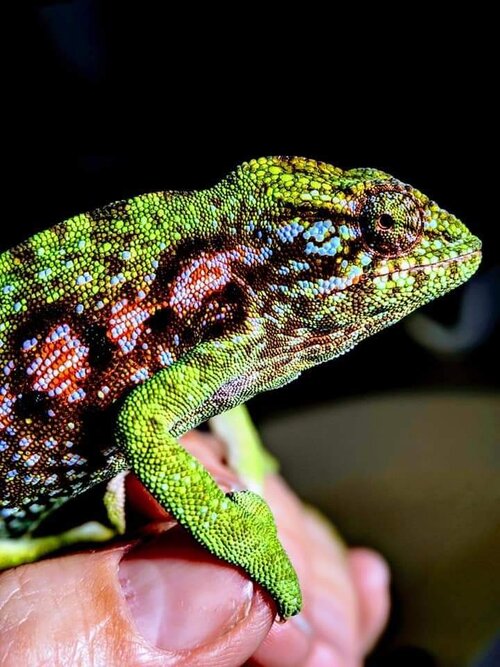Navigation
Install the app
How to install the app on iOS
Follow along with the video below to see how to install our site as a web app on your home screen.
Note: This feature may not be available in some browsers.
More options
You are using an out of date browser. It may not display this or other websites correctly.
You should upgrade or use an alternative browser.
You should upgrade or use an alternative browser.
Who am I #2 ?
- Thread starter ChameleonParadise
- Start date
Pickle-cham
Chameleon Enthusiast
Furcifer viridis. Furcifer
Latralis being the wrong name given
Latralis being the wrong name given
Furcifer Genus is correct.
that narrows it down to hown many species ?
Can we share where any pictures of most updated Genus and species Furcifer profiles, and natural history are
to be found ?
Thanks to all.
Hopefully we learnng and sharing.
that narrows it down to hown many species ?
Can we share where any pictures of most updated Genus and species Furcifer profiles, and natural history are
to be found ?
Thanks to all.
Hopefully we learnng and sharing.
Mendez
Chameleon Enthusiast
Yeah, of course: https://www.madcham.de/en/category/chamaeleons-habitatsdaten/furcifer-arten/
Madcham seems to have the most up-to-date species profile on Madagascar chameleons. They give information on the appearance, the size, region, temperature and humidity, and images of both male and female. Madcham is a wealth of information, especially for someone like me who has little experience with some of these unusual and rare species of chameleon. Madcham covers Calumma, Brookesia, Palleon, and Furcifer species.
If anyone on here wants to learn more about these species, I highly recommend you check out Madcham. Learn about a specific species and see if they require low nighttime temperatures. Madgascar has some pretty crazy temperature fluctuations--more so than people make it out to be. Some places get darn right cold. For example, Furcifer campani lives in a region where the highest minimum temperature for the year hits 59F. And at other times of the year, they drop down to 46F!
There's not really a solid place to look up information for species that come from mainland Africa. You pretty much have to check out many different sources to get a speck of info on them. There is the Mountain Dragons book by Jan Stipala that does give a lot of good information on jacksonii, hoehnelii, and other species and their various locale forms.
Madcham seems to have the most up-to-date species profile on Madagascar chameleons. They give information on the appearance, the size, region, temperature and humidity, and images of both male and female. Madcham is a wealth of information, especially for someone like me who has little experience with some of these unusual and rare species of chameleon. Madcham covers Calumma, Brookesia, Palleon, and Furcifer species.
If anyone on here wants to learn more about these species, I highly recommend you check out Madcham. Learn about a specific species and see if they require low nighttime temperatures. Madgascar has some pretty crazy temperature fluctuations--more so than people make it out to be. Some places get darn right cold. For example, Furcifer campani lives in a region where the highest minimum temperature for the year hits 59F. And at other times of the year, they drop down to 46F!
There's not really a solid place to look up information for species that come from mainland Africa. You pretty much have to check out many different sources to get a speck of info on them. There is the Mountain Dragons book by Jan Stipala that does give a lot of good information on jacksonii, hoehnelii, and other species and their various locale forms.
Thank you So Much Mendez !!!!
Couldn't have said it better.
www.Madcham.de at this point in time is by far the Best site Worldwide for chameleon information for
Madagascar.
You make great points , and there is much more, Photographs of habitats for the many species, Natural History,very important temperature regimes, micro climates, etc etc.
It would be fantastic to have , something like this for African species, that is up to date.
Easy to say , but not to do.
We are currently subscibed to monthly payments to the World food program, helping Madagascan people.
Next we are looking for the most effective funding for these countries conservation programs,
and bring them to light , and maybe get up on the Forums donation program.
Couldn't have said it better.
www.Madcham.de at this point in time is by far the Best site Worldwide for chameleon information for
Madagascar.
You make great points , and there is much more, Photographs of habitats for the many species, Natural History,very important temperature regimes, micro climates, etc etc.
It would be fantastic to have , something like this for African species, that is up to date.
Easy to say , but not to do.
We are currently subscibed to monthly payments to the World food program, helping Madagascan people.
Next we are looking for the most effective funding for these countries conservation programs,
and bring them to light , and maybe get up on the Forums donation program.
WE still are indentifying this full grown , sexually mature pair from the Genus species Furcifer. 
HypercolorChameleons
Member
This is a GREAT idea maybe @Brad can reward those who donate. With something like a NEW medal. Just would need to figure out where the donations would go to as for what type of conservation and maybe even different tiers along with different types of NEW medalsThank you So Much Mendez !!!!
Couldn't have said it better.
www.Madcham.de at this point in time is by far the Best site Worldwide for chameleon information for
Madagascar.
You make great points , and there is much more, Photographs of habitats for the many species, Natural History,very important temperature regimes, micro climates, etc etc.
It would be fantastic to have , something like this for African species, that is up to date.
Easy to say , but not to do.
We are currently subscibed to monthly payments to the World food program, helping Madagascan people.
Next we are looking for the most effective funding for these countries conservation programs,
and bring them to light , and maybe get up on the Forums donation program.
Last edited:
Looks like the identification answer is in Kinyonga's post...... 
Looks like the subspecies was elevated to Species in 2012.
Madcham.de specimens are young looking, harder to compare.
this species habitat is almost like Yehmen.
Looks like the subspecies was elevated to Species in 2012.
Madcham.de specimens are young looking, harder to compare.
this species habitat is almost like Yehmen.
Pickle-cham
Chameleon Enthusiast
Considered it to be a sub species of carpet Chameleons therefore called for called it Furcifer Lateralis major, whereby the Latin word major equals big.
Is native to Madagascar dry hot south. It lives in spiny forest and sometimes even in residues of dry forest.
This species is uniformly grass green or pale green-colored, with white, sparsely interrupted lateral stripe (may even lack) and white markings all over the body. Females can be more colorful but still remain pale compared to other species.
Until 2012, Furcifer major rated as subspeciesof Furcifer lateralis, but has been stated to be an own species then. For some years, this species is bred in captivity in small numbers, but there are still often uncertainties between
owners by identifying single individuals. It is questionable whether this confusion might have led to hybrids between Furcifer lateralis and major in captivity.
The habitat of Furcifer major is very various.
In Isalo, you can find them in savannas with low bushes and lots of zebu grass. In Zombitse-Vohibasia, they inhabit a large dry forest with Baobabs, old trees and lots of undergrowth.
Around Toliara (Tuléar) they mainly live in
secondary vegetation, in shrubs and bushes on sandy dunes.
https://www.madcham.de/en/furcifer-major/
HypercolorChameleons
Member
I would say no and yes because it was a guess on 2 different chams not a for sure answer.So @Mendez was right in post #4?
Mendez
Chameleon Enthusiast
Once I put in my two guesses, I (humbly  ) knew the species was F. major. I decided to refrain from saying a single answer to let others have some fun figuring it out. I'm perfectly fine not being the winner. My main goal on the chameleon forums is to throw you off @kinyonga--which it sounds like I did for a bit. So I guess today is a good day!
) knew the species was F. major. I decided to refrain from saying a single answer to let others have some fun figuring it out. I'm perfectly fine not being the winner. My main goal on the chameleon forums is to throw you off @kinyonga--which it sounds like I did for a bit. So I guess today is a good day!
Like everyone else here, I'm obsessed with chameleons. I can't sit still nor go a few minutes without thinking of reptiles. So I sometimes spend my time doing a deep dive on chameleon species. Like Bruce mentioned above, too bad there isn't a madcham equivalence for mainland Africa species. That would be amazing! I think we should figure out a way to make that happen. The resource that Madcham is to any chameleon hobbyist is remarkable
Like everyone else here, I'm obsessed with chameleons. I can't sit still nor go a few minutes without thinking of reptiles. So I sometimes spend my time doing a deep dive on chameleon species. Like Bruce mentioned above, too bad there isn't a madcham equivalence for mainland Africa species. That would be amazing! I think we should figure out a way to make that happen. The resource that Madcham is to any chameleon hobbyist is remarkable
Pickle-cham
Chameleon Enthusiast
Can you distinguish a f. Latralis, f.latralis major or f. Viridis by photograph alone? Or do you need a dna sample 

EriaKadu1332
Member
If you have worked with lateralis and viridis, hands on, then yes. I can because I have worked with both species. There are very distinct differences when you look at the two side by side. My first two pics are a lateralis male and my second following pics are a viridis female as well as one of the male in copulation resting colors. The patterns really are what tell the difference. The casque height is bigger in viridis. The snout is more blunted in the viridis. And the viridis species altogether is larger. But like the lateralis, the female is the more colorful.Can you distinguish a f. Latralis, f.latralis major or f. Viridis by photograph alone? Or do you need a dna sample
You can recognize the lateralis by its very distinct spots along that dorsal side stripe. The viridis lacks those spots when resting. When fired up, the spots appear, but is marred by imperfections or completions of the circle and are accompanied by smaller spots or streak. This spot in lateralis is nearly always a dark color--black or blue. In viridis, it is white. Or pink if a receptive female. If gravid, then the female viridis will display dark circles that are always pink or red inside.
Attachments
Similar threads
- Replies
- 6
- Views
- 753







